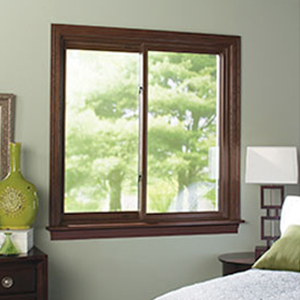Condensation is a sure sign that your windows should be replaced.
Windows are a vital obstacle between the extreme, variable weather conditions outside and our calmness, constant house temperature levels. Home replacement windows quite often have a fifteen to twenty-year lifespan, so fortunately we don't have to think about replacing them frequently. Yet recognizing when it's time to replace them can be tricky. You could be tempted to try and hold out for another season if you recognize the warning signs. But replacing your windows now could help you prolong the life of your entire house and keep you and also your household cozy all wintertime long. Below are a few indications that your home windows are not all set for the severe wintertime this year.
Drafty Residence
As windows age, they start diminishing, damaging, and also not closing appropriately, allowing air from inside your the home of drain. As a result of this, your HEATING AND COOLING system battles to maintain your house at a continuous temperature level and also sends your power bills skyrocketing. If your house is significantly extra breezy or your electrical expenses seem to be going up this fall for no obvious reason, you might intend to have your windows had a look at.
Difficult to Lock
We enjoy having our windows open when the weather condition behaves, but they should not be open all of the time. During the winter when we're away, your home windows ought to be shut in location and also locked. Windows with malfunctioning locks is a major protection threat that need to be remedied as soon as possible to keep your family secure. Usually the lock can be fixed cheaply, however if the window is having difficulty staying open or shut or is leaking air, it could be best to just set up a brand-new one.
Condensation Forming
The biggest indicator that you need brand-new windows is when condensation begins to form on the within your window when it is closed and also locked. This is indicative of a most likely incurable imperfection and also ought to be dealt with asap to prevent the potential development of mold in the framework, which could infect other areas of your residence as well as trigger significant damages when left neglected.
Have you nearly had it with your old, drafty windows?
Is this Windows the year you've determined to finally change your windows? Replacing your windows with new ones includes lots of benefits, including an energy efficiency boost, far better air flow, and much better high quality of light in your house. The National Fenestration Score Council accredits as well as identifies windows (along with doors as well as skylights) on their performance and also power effectiveness. When you're purchasing new windows you'll see these rankings on the NFRC label. In this week's blog, we'll talk about how to read this tag to make certain you're making a notified decision on your brand-new windows.
Warm Gain and also Loss
The very first 3 buildings on the label pertain to just how the home window executes with regard to warm gain as well as loss. Windows gain and also lose heat in 3 ways:
Straight transmission via the glass.
Radiation of heat from the sunlight right into your home, as well as away from the house from things in your home.
Air leakage through and also around the home window.
U-factor
This is "The price at which a window, door, or skylight conducts non-solar warmth circulation." The takeaway right here is "The reduced the U-factor, the a lot more energy-efficient the window, door, or skylight."

Solar Warmth Gain Coefficient
The SHGC informs us just how much radiation is confessed via the home window and released as warmth in the home. The lower the number, the less heat is sent. However, this doesn't always mean you want a low SHGC. As an example, because a higher SGHC implies the home window permits extra heat in, you could permit much more solar warm inside in the winter months, which could lower your home heating needs. In this instance, the climate you stay in will certainly play a significant factor in selecting an SHGC score.
Air Leakage
This measures just how much air the window lets in relative to a specific stress difference across it. The lower the rating, the less air leakage.
Sunshine Passage
The next 2 scores measure how much light a home window lets into your house.
Visible Transmittance (VT).
This number between 0 and 1 procedures what fraction of the range of visible light the home window lets through. The greater the fraction, the more light the home window will permit. If you intend to utilize daylighting in your house, you'll want a greater fraction. If you wish to decrease indoor glow, you may want a lower portion.
Light-to-Solar Gain.
This number is the proportion between the SHGC as well as the VT. "The higher the number, the extra light transmitted without including too much amounts of warm.".